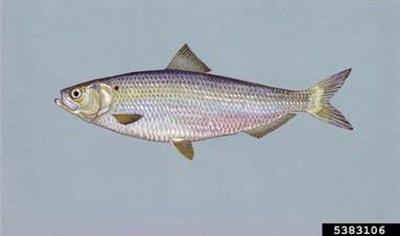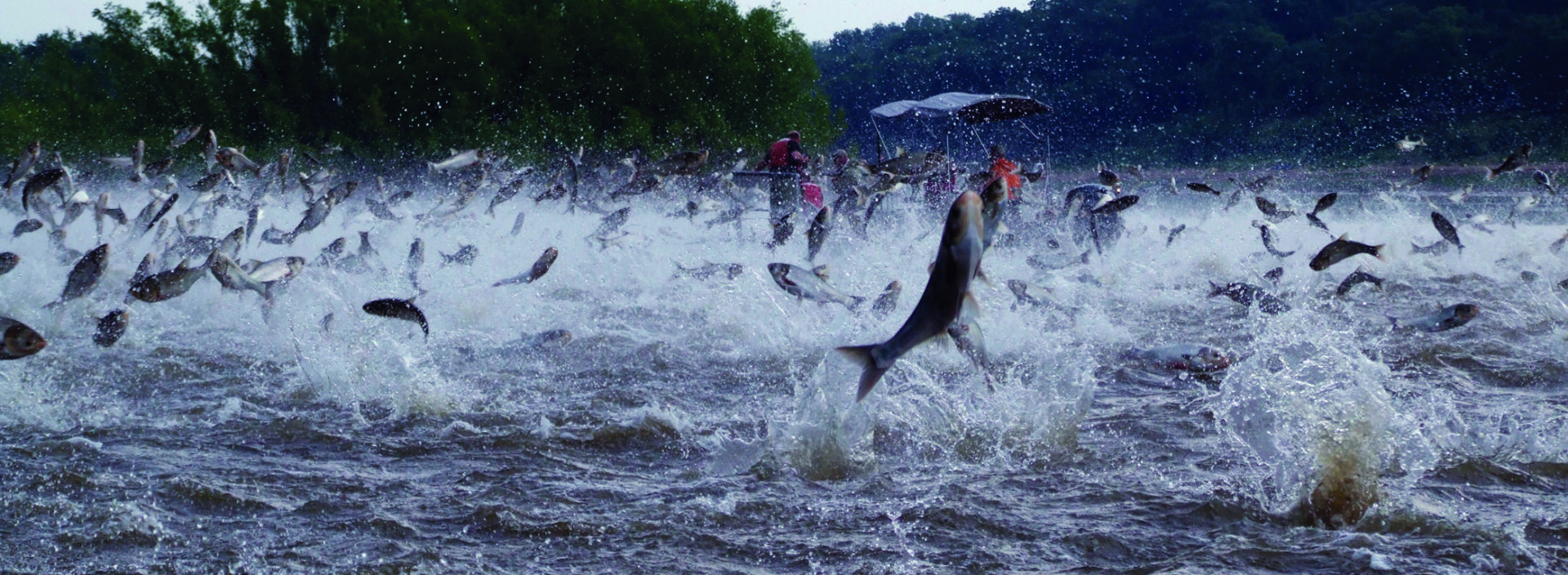
Where did the blueblack herring come from?
Blueback herring are native to the Atlantic Coast. They were stocked as food for game fish in southern reservoirs, and were discovered in Lake Ontario in 1995 after entering via the New York State Canal System.
Why is it a problem?
If the blueblack herring becomes established in Lake Ontario, they could spread to the other Great Lakes. In other areas, the introduction of blueblack herring has coincided with a decrease in game fish. It is likely the blueblack herring preys on the eggs and larvae of native fish and competes with them for zooplankton.
What does the blueblack herring look like?
- Adults are 5-12 inches long.
- Their bodies are silvery with a deep bluish-green on the back.
- They have a series of scutes (scales that are spiny and keeled) along their bellies.
- The only way to distinguish alewives from blueback herrings is to dissect them–the lining of the alewife’s body cavity is white, and the blueback herring’s is purple.
How can we prevent their spread?
Be careful not to use blueback herring for bait.
What habitat does the blueblack herring prefer?
Blueblack herrings prefer deep, open waters, and they spawn in spring to early summer in rivers and streams. In their native habitat, the fish are anadromous, meaning that they spend most of their lives in salt water but move to fresh water to spawn.


